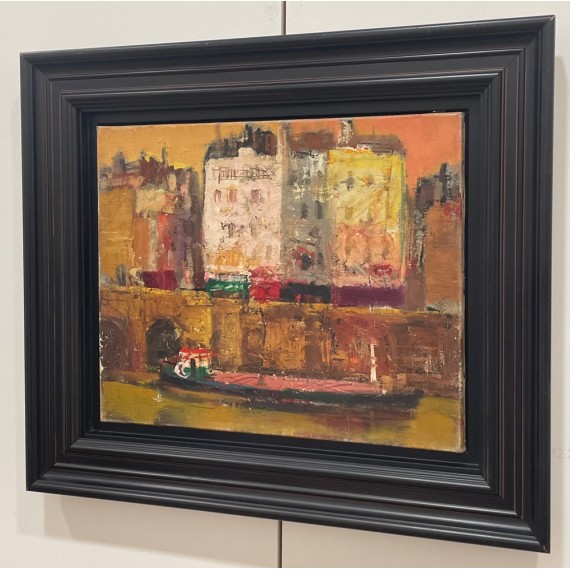
Raoul DUFY (1877-1953)
Lithograph after a painting by Dufy from 1919
Signed in the plate
Limited edition of 1000 proofs.
On Arches Vellum paper 65 x 50 cm
Size without margins: 50 x 42 cm
Printed by the Mourlot studio in 1969
Raoul Dufy
From 1893, he studied at the municipal school of fine arts in Le Havre. He meets Othon Friesz with whom he then shares a workshop in Montmartre and who will remain one of his most faithful friends. He paints Norman landscapes with watercolors.
In 1900, thanks to a grant, he entered the "École nationale supérieure des beaux-arts" de Paris, with his friend Othon Friesz. He draws a lot. His first exhibition at the Salon of French artists took place in 1901, he then exhibited in 1903 at the Salon des independants.
He was influenced by Fauvism, in particular the paintings that Matisse exhibited at the Salon d'Automne in 1905. He painted a lot around Le Havre and stayed in Provence where he painted a series of landscapes.
In 1907, a large retrospective on Paul Cézanne took place. As with many artists, it’s a shock. He realizes the capital importance of this artist. He abandons Fauvism. He went to L'Estaque near Marseille with Georges Braque who performed his first Cubist works there. His friend's research influences him as he begins to paint something other than landscapes: studies of horses, trees, still lifes and living models ...
His drawing will be more and more free and bursting with light.
In 1910, he made his first woodcuts and worked on fabrics for fashion. He will contribute to the beginnings of Paul Poiret and to the launch of his career. His contribution for fashion and upholstery will be long, for more than twenty years. He also made sets and costumes for Jean Cocteau, then for the Comédie Française.
He will also collaborate in the illustration of books for Mallarmé, Guillaume Apollinaire, André Gide, Colette…
He will also produce a large ceramic work, composed of more than two hundred pieces.
In 1936-1937, with his brother Jean Dufy, he produced the largest existing painting in the world for the Electricity pavilion at the 1937 Universal Exhibition: La Fée Électricité1 (624 m2), now visible at the museum. of modern art of the city of Paris.
He was raised to the rank of Commander in the National Order of the Legion of Honor.
At the Geneva Museum of Art and History, 261 works, as well as ceramics, tapestries, books were collected in 1952. In addition, 41 works were sent by France to the Venice Biennale. He won the Painting Prize, and offered the amount to an Italian painter and Charles Lapicque so that they could stay one in France and the other in Venice.
He died in 1953 from a heart attack.












